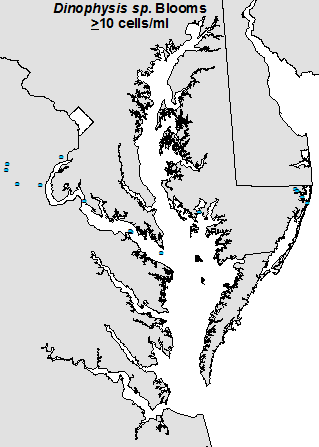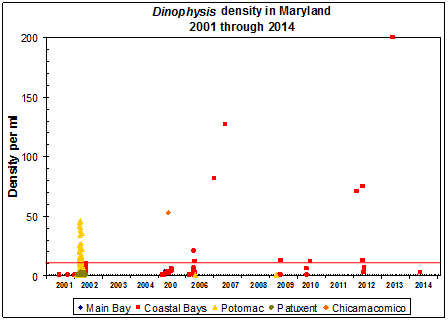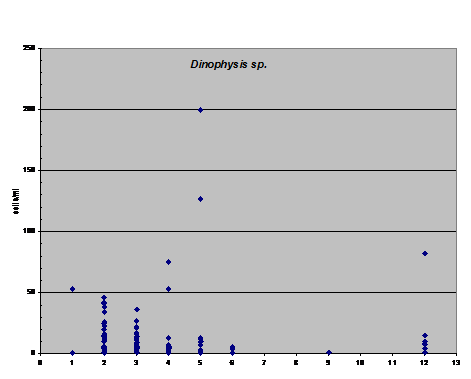Harmful Algal Blooms in Maryland
Main_Content
Dinophysis
Dinophysis spp.: This is a coastal ocean dinoflagellate that can contain little to no pigments. Dinophysis produces okadaic acid as well as other toxins that lead to diarrhetic shellfish poisoning, DSP. Primarily blooms subsurface in thin layers. Only occasionally seen in the Chesapeake Bay, it often blooms in the coastal lagoons of MD (January-June). In 2002, the lower Potomac had a temporary closure of oyster harvests. Its delivery up-bay is tied to presence in coastal waters as well as drought conditions where ocean influx of water and plankton at the mouth ensure population delivery to the lower bay for subsequent transport. At bloom levels (10 cells/ml), it is still scarce and likely not detected with any pigment-related remote detection techniques.
Around the world, blooms of Dinophysis can sometimes lead to toxic red tides. Shellfish in the area of a bloom can accumulate the okadaic acid toxins or derivatives of the toxin when feeding on the algae. Diarrhetic Shellfish Poisoning (DSP) has occurred in humans consuming the contaminated shellfish resulting in symptoms that include intestinal discomfort, abdominal pain, nausea, headache, chills and vomiting. DSP from Dinophysis species has not been confirmed in U.S. seafood although the organisms are widespread in the U.S. Europe and Japan appear to be the most highly affected areas for cases of DSP. Despite thousands of documented cases of DSP worldwide since 1960, there are no reported fatalities associated with the illness.
 Distribution of Dinophysis blooms in MD (2000-2013)
Distribution of Dinophysis blooms in MD (2000-2013)
 Annual occurence of Dinophysis blooms in MD (2000-2015)
Annual occurence of Dinophysis blooms in MD (2000-2015)
 Monthly occurence of Dinophysis in MD (2000-2015)
Monthly occurence of Dinophysis in MD (2000-2015)